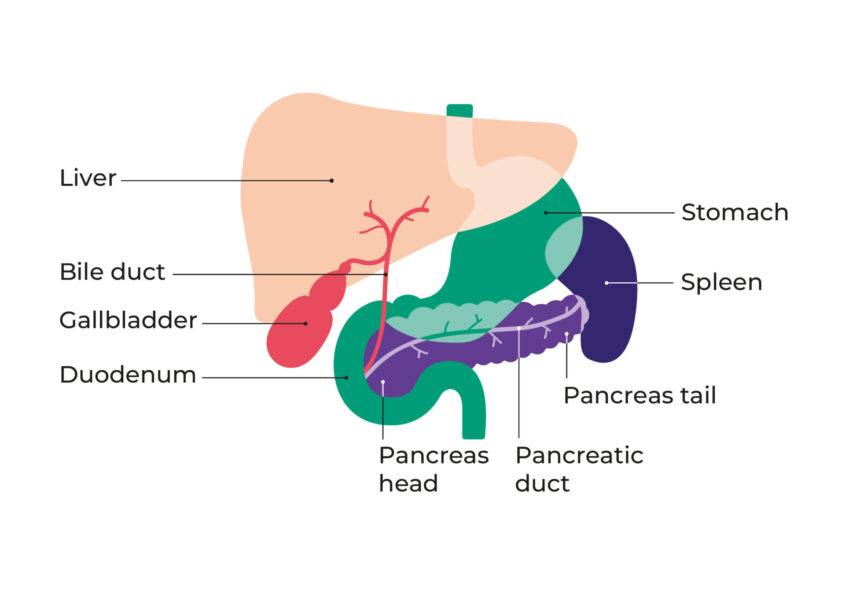A-B
Absorption
Once your food has been broken down, the nutrients are absorbed into the blood so that they can be used by the body. Read more about diet and digestion.
Adjuvant
Adjuvant treatment is given alongside or after the main treatment. This may be adjuvant chemotherapy or radiotherapy that is given after surgery. Or it may be other medicines that are given alongside painkillers to help manage any pain.
Advanced pancreatic cancer
Advanced pancreatic cancer is cancer that has spread from the pancreas to other parts of the body, such as the lungs or liver. It is also known as metastatic cancer. It is not possible to remove advanced pancreatic cancer with surgery.
Ampulla of Vater
The ampulla of Vater is the area where the pancreatic duct and the bile duct meet at the duodenum. This is also known as the hepatopancreatic ampulla.
Analgesic
An analgesic is a medicine that relieves pain. Read more about pancreatic cancer and pain.
Ascites
Ascites is a build-up of fluid in the tummy that may cause swelling. Read more about ascites and how it is managed.
Bile
Bile is a fluid which helps digestion. It is made by the liver and stored in the gall bladder.
Bile ducts
Bile ducts are tubes that carry bile from the liver to the small intestine.
Bilirubin
Bilirubin is a yellow substance found in bile that comes from the breakdown of old red blood cells. A build-up of bilirubin in the blood can cause jaundice.
Biopsy
A biopsy is a test that removes small tissue samples to examine under a microscope. A biopsy is the only way of being absolutely certain that you have pancreatic cancer. Read more about a biopsy.
Borderline resectable pancreatic cancer
Borderline resectable pancreatic cancer is cancer that has grown very close to the major blood vessels near the pancreas. It may be possible to remove the cancer, but it depends which blood vessels are affected and how far the cancer has grown.
Bypass surgery
If pancreatic cancer is blocking the bile duct or the duodenum, bypass surgery may be used to relieve the blockage. This can treat symptoms such as jaundice or being sick.





